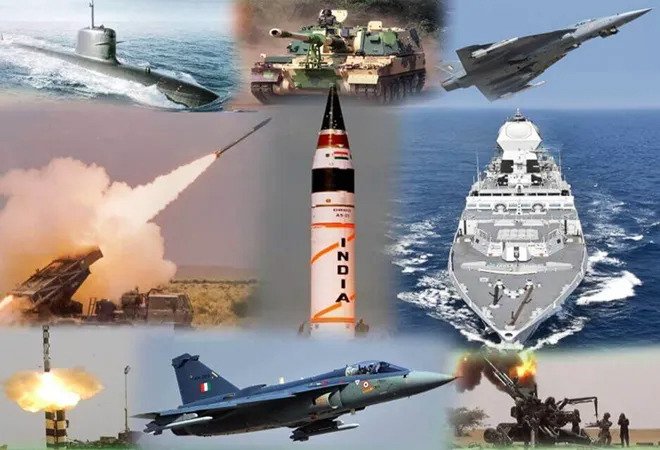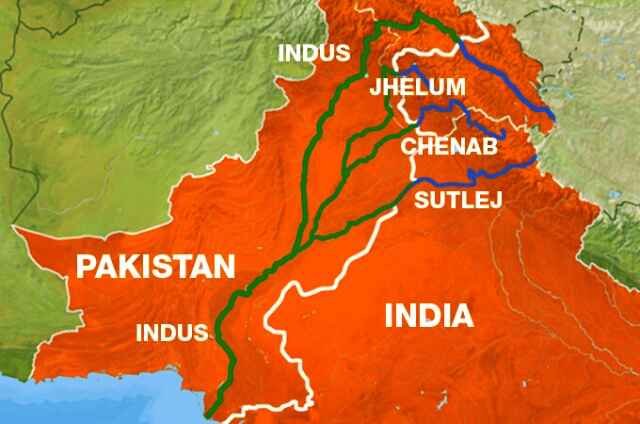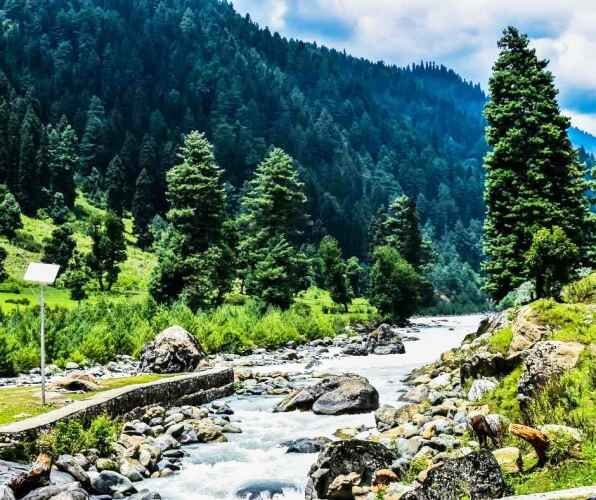The target of the operations going on in Kashmir at this time is not only Pakistani terrorists but also their helpers. These are the people of Kashmir who eat the food of India but work for the terrorists coming from Pakistan. After the Pahalgam attack, the security agency has taken 1700 overground workers of South Kashmir, that is, those who help the terrorists.
Jammu Kashmir Police is currently interrogating all those people whom they suspect to be the overground workers. Those who spy for the terrorists or make complete arrangements for the stay and food of the terrorists from one place to another. You can say that without overground workers, it is almost impossible for terrorists to attack anywhere in Kashmir. That is, in the Pahalgam terrorist attack, some local people must have been involved who would have told the terrorists about the tourists or the distance of the Suna post from there. Maybe they would have also told whether most of the tourists coming are Hindus or Muslims. Looking at the pictures coming from Kashmir, you must be thinking that if the terrorists are being searched in this way, then why are the terrorists of Pakistan involved? How will the operation be conducted against it? You might also be wondering what India’s attack policy will be against terrorist attacks. According to the war policy, what the enemy expects should not be done at all; that is, the enemy should be surprised every time. In 2016, the Indian Navy commandos carried out a ground attack, in 2019, a strike was carried out from the airport, so will the Navy attack any seashore of Pakistan in 2025? After land and air, the sea can be considered next, but Pakistan’s city Karachi is on its sea border, and there is nothing like a terrorist base there; that is, the chances of an attack through the sea are almost nil. So in this situation, what are India’s options for attacking Pakistan’s border? India’s first option could be to activate the lock. There is a ceasefire going on at the LoC at this time, but looking at Pakistan’s actions

Breaking the shell fire can be the right decision. The second option is to attack terror training camps and launch posts in PoK by using artillery on the LoC. With the help of Force Top and the Indian Field Gun, the border can be targeted up to 35 km. What are these launch posts, and what is their role in sending terrorists? We will tell you later. The third option is Brahmos and multi-barrel rocket launchers, which can attack long distances inside Pakistan. The range of Brahmos is about 300 km, while multi-barrel rocket launchers like Pinaka and Smart can rain ammunition up to a distance of 180 km. In simple words, every area of Pakistan is in the range of Brahmos. The fourth option is stand-off bombs, that is, weapons that can be launched from a distance with the help of fighter jets of the Indian Air Force. For this, there will be no need to attack PoK. India has Rampauge missiles which can accurately target up to 250 km. Apart from this, India has another new weapon which has come to our Air Force after the air strike in Balakot. It has been inducted into service.
At present, India has 36 Rafale aircraft, and the Pakistani Air Force does not have any jet aircraft to compete with them. The base of Rafale is also near Pakistan in Ambala, Haryana. The distance of the India-Pakistan International Border from here is just 200 kilometers, and Rafale can fly at its top speed of 2100 kilometers per hour and reach the border in just 5 minutes, and take action. We have already told you about the long-range weapons of the Indian Air Force; that is, Rafale will not need to cross the border and enter Pakistani territory. In our analysis, you must have heard the word launching pad. Now, let us also tell you about the launching pad of terrorists. When you hear the name of a launching pad, you must think that it would be an empty field where a camp would be set up and 50 or 100 terrorists would be together and training would be given to use weapons, but the launching pad of terrorists is not like this at all. The launching pad of terrorists is located in some areas of PoK on the other side of the Indian border. It is situated at a special location, it is an area that looks like a small village or a small population, which is settled about half to one kilometer away from the main Pakistani post.
In this type of village, terrorists trained by Pakistan in Jammu are gathered. Here, if there is a group of 10 terrorists, they are kept in different parts of the village. You should understand that terrorists do not come and make a camp for them, make a big house and keep them there, but rather every terrorist is kept in a separate house. The terrorists are called to a place at a fixed time by fixing a fixed date for infiltration, and from the new place they are sent forward for infiltration. The place where they are called and trained is called the launching pad. We think you must have understood everything about the launching pad. At this time, India has a feeling of taking revenge on Pakistan. Some people want India to attack POK, that is, Pakistan-occupied Kashmir, and liberate it from Islamabad. Now, the question is whether attacking POK is going to be so easy because there are some big challenges in attacking POK that need to be understood. First, the landmines present on the LoC, second, the geographical situation there, and third, the heavy deployment in POK. These three challenges are a bit complicated. First of all, let’s talk about landmines. In the wars of 1947, 196,5 and 1971, both the Indian and Pakistani armies had laid landmines on the LOC, which have been lying in this area for years. Every soldier keeps a map of his landmines with him, but in all these years, many storms and landslides have occurred in this area, due to which the landmines have shifted. It is difficult to estimate where these landmines have reached with the help of this Malwa and water. The second biggest challenge is the geographical location of Pok. Apart from this, there are some areas here where one cannot take raincoats, due to which troops may have to face a lot of difficulties in movement. Understand two things. First thing, if any strike is done on that side, then the biggest challenge is that it is from the landline; secondly, its geographical location. There are many drains, high peaks, drains are such that they change their course anytime; mapping them is also difficult. Pakistan knows that the part of Kashmir which it has occupied will one day or the other be destroyed. India will come to take it back, and in recent times, it has also realized the importance of time. Pakistan has made a huge deployment here. Pakistan’s biggest army formation, 12 Infantry Division, is deployed in PoK, in which around 30,000 soldiers are present. Apart from this, 2 to 3 divisions of the SSC are deployed, and the Pakistan Paramilitary Force is also deployed there. Overall, Pakistan has deployed an army of 80,000 in PoK. Pakistan has prepared another line of defense in PoK of ex-servicemen, retired soldiers. The Pakistani Army has settled a large number of retired soldiers in PoK, so that the dominance of the local people is reduced, and the intelligence of army is also strong.
When there was a terrorist attack in Puri, in response, there was a surgical strike in PoK. When there was an attack in Pulwama, there was an air strike in Balakot. What will be the new stringy this time?
Now, terrorists killed 26 people in Pahalgam in Jammu and Kashmir, so the question arose whether India will do something big again. How did we respond to the last terrorist attack in the Modi government? What will we do this time to take revenge for Pahalgam?

18 soldiers were martyred and 30 were injured in the attack. All four terrorists were killed in a 6-hour-long firefight. India took revenge by conducting a surgical strike. For this, 25 commandos of the Special Forces were selected on 9 and 4. The commandos reached the target and killed many terrorists and also destroyed the enemy’s launchpad ammunition. The media named this a surgical strike. Similarly, India avenged the martyrdom of 40 soldiers in Pulwama by an air strike in Balakot. On February 14, 2019, a CRPF convoy in Pulwama, Jammu and Kashmir. An attack was carried out on the Pahalgam terror attack in which 40 CRPF soldiers were martyred and 70 soldiers were badly injured. The responsibility of this attack is also that of Mohammad Ali. In response, on 26 February at 3:30 am, Mirage 2000 fighter jets entered PoK and attacked the terrorist camps in Balakot and Khyber Pakhtunkhwa. In a 21-minute operation, the Air Force dropped 1000 kg smart bombs, in which hundreds of terrorists and Jaish’s training camps. In such a situation, the question arises that what will India do next on the Pahalgam terror attack? Immediately after Pahalgam, Home Minister Amit Shah reached Srinagar, and PM Modi also returned to the country by cutting short his Saudi tour. A series of high-level meetings is going on. At the same time, PM Modi tweeted that those who are behind this act will be brought to justice; they will not be spared. Experts say that if the investigating agencies find a direct connection between Pakistan in the Pahalgam attack, then India will take some action in return. This could be a hidden mission or an open battle. The attack started with the Balakot air strike. It can also be of a bigger star. Do you know what options India has to take revenge for this terrorist attack? Experts believe that India has two options. First, missile attacks can be carried out in Pakistan by determining the exact coordinates, i.e,. location of terrorist hideouts and military camps on the border, and second, whether it is the Russia-Ukraine war or the war between Israel and Palestine, we have seen dangerous drone attacks in both. India can attack from unmanned zones by selecting the hideouts of terrorists on the border. However, Pakistan knows that India will not remain silent in the event of a war. In such a situation, it cannot be denied that if the situation worsens, it can also lead to a war.
Will India be able to stop Pakistan’s water overnight? 90% of their agriculture depends on the Indus water. What options are left for Pakistan now?

The biggest decision among the five steps taken by India after the Pahalgam attack is to stop the Indus Water Treaty. This water is essential for the production of electricity, agriculture, and drinking water in Pakistan. India’s message is clear. Now, if relations are formed with Pakistan, then terrorism will be a factor in it. What will be the impact of these decisions on Pakistan? Can India stop the water from going to Pakistan? The Cabinet Committee on Security (CCS), headed by Modi, has given five steps, including stopping the Indus Water Treaty. Suspending the Indus Water Treaty of 1960. About 90% of Pakistan’s water comes from these rivers. With this SMS decision, along with the common people, its economy will also completely collapse. Immediately closing the Attari Bagha check post. There is only one land route for trade with Pakistan. Patients from here will also face problems. For example, there was a facility of visa-free travel in 24 categories, but it has been canceled from now onwards. Military diplomatic relations will end completely. The number of employees in the India-Pakistan High Commission will be reduced from 5 to 5. Now, let us know what the agreement is between India and Pakistan. After partition, with the help of the World Bank, the Indus Water Treaty was signed between the then PM of India, Jawaharlal Nehru, and the PM of Pakistan, Ayub Khan, in 1960. In the agreement, 6 rivers flowing from the Indus Basin were divided into eastern and western parts. The agreement was known as the Indus Water Treaty. Under the agreement, India can use 20% water of the three eastern rivers and Pakistan can use 80% water of the three western rivers. In such a situation, the question arises whether India can stop the water going to Pakistan under the Indus Water Treaty. On this, Brahma Chalani says that under section 62 of the Law of the British of Haryana Agreement, India can withdraw from the treaty on the ground that Pakistan is using terrorist groups against it. India has made it clear by taking a decision that it has separated from the Indus Water Treaty. It is not the case that it will accept these conditions. However, it will take some time to see its action on the ground. If you raise it at the United Nations or any other international front, then nothing will happen because everyone knows that Pakistan has some role in the Pahalgam terrorist attack, in such a situation no country will stand with Pakistan, China also condemned the Pahalgam attack, after this China will hardly openly support Pakistan on this issue
Pahalgam La India is called Mini Switzerland? Kashmir Tourism?

After the terrorist attack in Jammu and Kashmir, Pahalgam is the first place to be recognized as a popular tourist destination in the district of Jammu and Kashmir. The village of Asun Te is recognized as a popular tourist destination every year. A large number of tourists come here not only from across the country but also from abroad. According to the official data, 35 lakh tourists visited Kashmir in 2024. Most of the tourists visit here during the period from March to June. The reason or period of Pahalgam is the beauty of the surrounding area, the complex is surrounded by dusty forests and hills, and it is full of greenery. Also, there are beautiful lakes, hence many people like Pahelgamla, India, and Switzerland. It is also said in the Kashmiri language that Pahalancha means the village of Mendhpalan. Shooting of many Bollywood films took place in the Pahelgam area. The most important stage of the Amarnath Yatra is Pahalgam itself. Pahelgam itself is 96 km from Srinagar airport by rail. From Udampu, it is 27 km away, and Jammu-Kashmir is 80 km away. Road connectivity in the area is good. Not only the government, but also private buses and taxis go to Pahelgamla here. Gadi Baisara,n Sheshnag Sarova,r Panchtarn,i Amarnath Cave Aruvali, and Leaderwat are major tourist places, i.e., the surrounding snow-capped peaks and the foothills are a flat Kuruna region with sloping heights. A large number of tourists visit this area, but there is no proper road to this area, hence, there is no proper road to reach this place, and the tourists have to go here and there on horseback, which is a huge cost for the tourists. There is a lot of noise for the tourists, eleven kilometers from Baisan, one route of the Amarnath Yatra goes to Varunuch near Pahelgam, Chandanwadi, 13 kilometers from the famous Chandanwadi. Sheshnag pond, located 3453 meters from Samudraspati, is famous for its green water. Junnar is famous for its green water, where people like to go to places like Arjun and go for trekking. There are seven peaks in the area which remind us of the Hindu mythology of Sheshnag lake, hence it is said that the lake Sheshnag Sarovar is found like a boat. Pahelgam near Panchtarni is the confluence of five waterfalls, the last part of the Amarnath Yatra is here, where it stops for the night. It is about six kilometers from the Amarnath cave. Every year from July to September, thousands of Hindu devotees visit Amarnath lake to have darshan of the barfacha pindi in Aruvali and Ledervad, or Pahelgam’s Jagahi is famous for trekking. Sunny Deol and Amrita Singh are in the Bollywood movie Betaab, which is near Pahelgam. The valley is called Betaab Valley, where nature lovers or tourists visit the complex. It is the habitat of wild animal species such as the Asian black horse, red koala, and musk deer.
